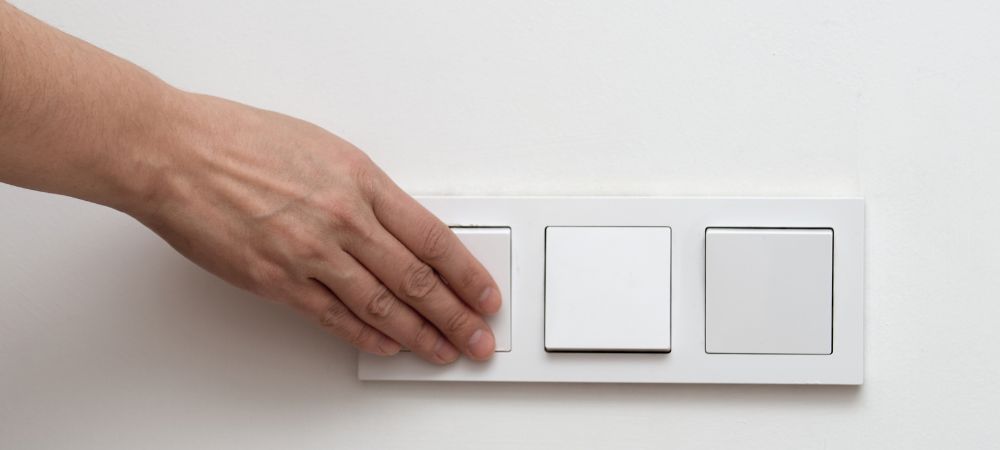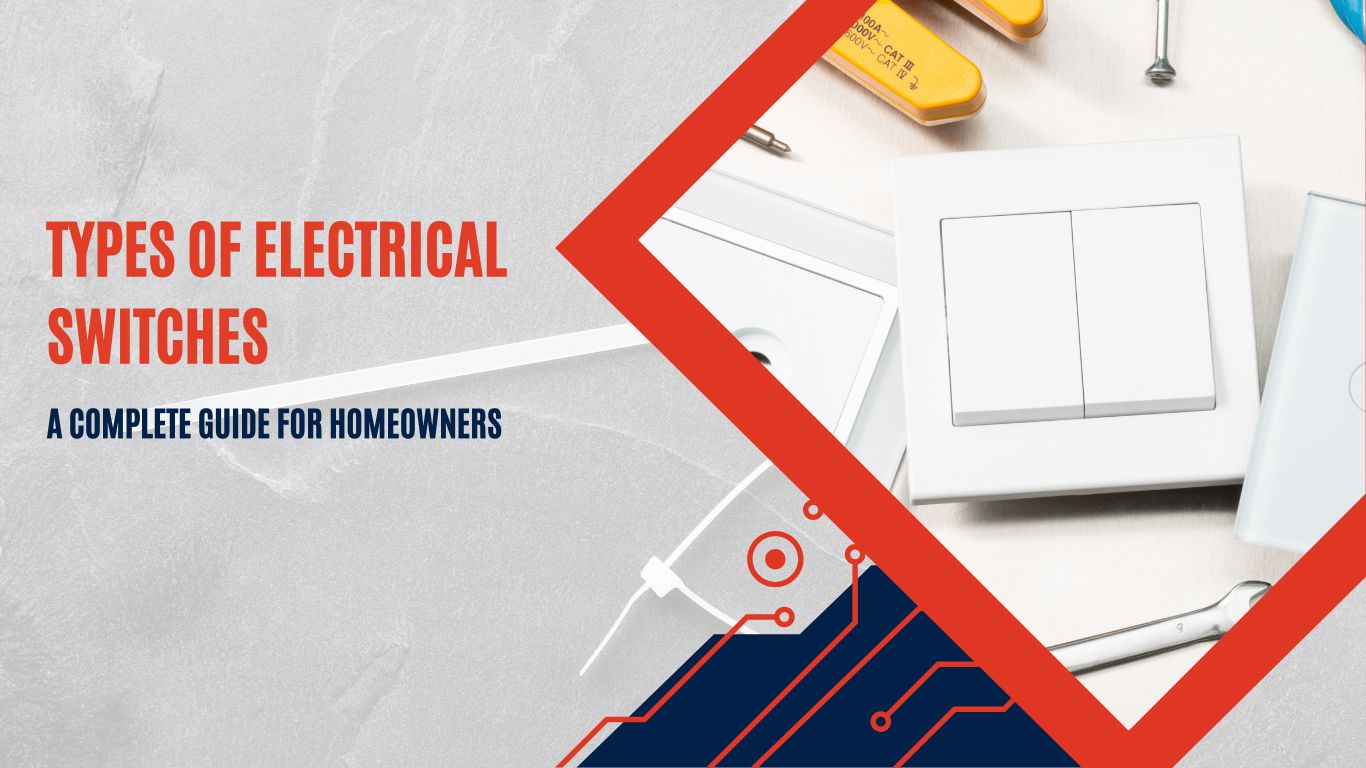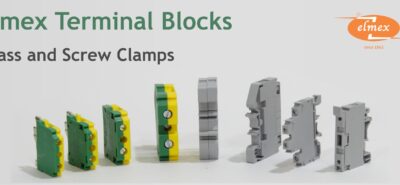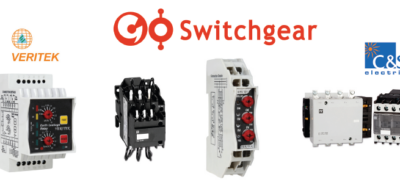Types of Electrical Switches: Guide to Choosing Residential Switches
Electrical switches are an essential component of every home and business. They perform a crucial task, letting you control lighting, appliances, etc. The type of electrical switches you choose impacts energy efficiency, ease of use, and safety. The market is rapidly evolving with the introduction of innovative technology, such as smart switches. According to industry reports, the global switchgear market is projected to reach $140.5 billion by 2027, and this estimated increase shows the high demand for and importance of these components in electrical systems.
But how are you supposed to choose the right type of electrical switch for your home? Choosing the right electrical switch is necessary for your system’s safety and functionality. Whether renovating an old building or making a new one, understanding the different types of electrical switches can help you choose the right one.
30 Seconds Summary
- An electronic switch is a binary device that controls the flow of electricity within a circuit. When the switch is flipped, it either connects or disconnects the whole circuit, which controls the flow of electricity to various devices such as lights, fans, televisions, refrigerators, etc.
- A single pole switch is the most frequently used type of electrical switch in residential settings. It is easy to identify and often has an “ON” and “OFF” label for clarity.
- A double-pole switch is a reliable option for appliances that demand higher power, such as water and air conditioners.
- You need a three-way switch if you need to control a single device from two different locations. This type of switch is commonly installed in hallways, staircases, and large rooms with multiple entry points.
- A four-way switch is ideal if you want to control a single device from three or more locations.
What Is an Electronic Switch?

We are all familiar with electrical switches. When you turn them on, the light comes on, but when you turn them off, the light goes off. However, electrical switches are not as simple as this.
An electronic switch is a binary device that controls the flow of electricity within a circuit. When the switch is flipped, it either connects or disconnects the whole circuit, which in turn controls the flow of electricity to various devices such as lights, fans, televisions, refrigerators, etc. Although the design of the switch can vary, the main function of an electrical switch remains the same, i.e., it either breaks or completes the circuit. These switches’ simple functions are essential and indispensable for every household and business.
Find the perfect switch for your home at Go Switchgear.
Common Types of Electrical Switches in the Home
Understanding the different kinds of electrical switches used in residential settings will help you select the right one for your needs. Here are some of the most common types of electrical switches in homes based on configuration.
- Single Pole Electrical Switch
The single pole switch is the most frequently used type of electrical switch in residential settings. It is easy to identify and often has an “ON” and “OFF” label for clarity. This switch controls a single device, such as a light, fan, or outlet.
A single-pole switch structurally has two brass terminals: one terminal connects to the live (hot) wire, while the other links to the outgoing wire. Some switch models also have a ground terminal for added safety. When you toggle the switch, it either completes or breaks the circuit, turning the connected device on or off.
Pro Tip: If you notice a blue wire attached to your single pole switch, it may be acting as a hot wire rather than a neutral one. Label it with black tape to prevent confusion when performing electrical work in the future.
- Double Pole Electrical Switch
A double-pole switch is a reliable option for appliances that demand higher power, such as water heaters and air conditioners. It looks similar to a single-pole switch but is designed to handle heavier electrical loads.
Unlike the single pole switch, this switch has four brass terminals instead of two, this means that it can control two hot wires at once. Basically, it works like two single pole switches combined into one unit. This design makes it suited for industrial applications and large residential electrical systems.
- Three-Way Switch
If you need to control a single device from two different locations, you need a three-way switch. This type of switch is commonly installed in hallways, staircases, and large rooms where there are multiple entry points.
A three-way switch has three terminals: one connects to the incoming live wire, while the other two are linked to “traveler” wires that connect the switch to another three-way switch. A ground terminal is also included for safety.
- Four-Way Switch
If you want to control a single device from three or more locations, a four-way switch is ideal. Although it is not as common as single or three-way switches, it is beneficial in large spaces like event halls, open-plan living areas, or long corridors.
When a four-way switch is used with two three-way switches, it creates a network where one device can be controlled from different points. It has four terminals: two for incoming traveler wires and two for outgoing ones for smooth operation across multiple switch locations.
Installation Tip: The wiring pattern for four-way switches can be different depending on the manufacturer. Therefore you should always check the wiring diagram before installation or replacement.
Modern switches can do much more than turn lights on and off; based on usage, here are different types of electrical light switches:
- Dimmer Switches
- Adjust brightness instead of just on/off.
- Helps create ambiance and saves energy.
- It comes in two types:
- Trailing Edge: Smooth dimming, best for LEDs.
- Leading Edge: Works with older bulbs but is not ideal for LEDs.
- Smart Switches
- Lets you control lights and devices remotely via an app or voice command.
- Can schedule lights to turn on/off automatically.
- Some models also have dimming features.
- “Do Not Disturb” Switches
- These switches, commonly found in hotels and healthcare facilities, help maintain privacy.
- When activated, they illuminate an external indicator or sign, signaling that the occupant does not wish to be disturbed.
- Occupancy Switches
- Uses motion sensors to turn lights on when someone enters a room and off when they leave.
- Great for places where lights are often left on, like garages and hallways.
- Most occupancy switches offer three operational modes:
- Always On: Lights remain on regardless of movement.
- Always Off: Lights stay off until manually turned on.
- Sensor Mode: Lights activate only when motion is detected.
These switches are perfect for areas where lights are frequently left on, such as hallways, bathrooms, and garages.
- Bell Push Switches
A bell push switch is a momentary switch that only completes a circuit when pressed. It is most commonly used for doorbells in homes and offices.
Get the best for your homes with Go Switchgear’s top-quality electrical switches.
Which Switch Type Is Rarely Used in Residential Wiring?

A double-pole switch is not commonly used in homes because it’s designed for high-power appliances like ovens and water heaters. Instead, it’s more often found in industrial settings. Most homes only need single-pole switches for standard lights and outlets. Moreover, types of electrical disconnect switches, such as heavy-duty isolators, are more common in commercial and industrial spaces.
Different Types of Electrical Disconnect Switches
Electrical disconnect switches are necessary for safety; these switches let users cut power to a circuit when maintenance is required. Here are the main types:
- Fused Disconnect Switch: Have a fuse for overcurrent protection.
- Non-Fused Disconnect Switch: Isolates the circuit but lacks overcurrent protection.
- Safety Disconnect Switch: Used in industrial settings for heavy machinery.
Choosing the Right Switch for Your Home
Selecting the right types of electrical switches in the home depends on several factors:
- Location: Single-pole switches are often used in bedrooms, while three-way switches are great for hallways.
- Electrical Load: Double-pole switches are ideal for handling high-power appliances.
- Smart Integration: Smart switches add convenience and automation.
- Aesthetic Appeal: Choose from toggle, rocker, or touch-sensitive styles.
Go Switchgear has a wide range of electrical switches that meet different residential needs.
Over to You
You can make an informed choice when you understand what type of electrical component switches there are.
For high-quality electrical switches, visit Go Switchgear today.
FAQs
Q: What is the most common type of electrical switch?
A: The most common type of electrical switch is the single-pole switch, which is commonly used in residential areas.
Q: Can I use a dimmer switch with LED bulbs?
A: Yes, but you have to be sure to use an LED-compatible dimmer to prevent flickering.
Q: How do smart switches work?
A: Smart switches connect to Wi-Fi or Bluetooth so that you can control them remotely via a smartphone app or voice assistant.
Q: Which switch is best for large appliances?
A: Double-pole switches are ideal for large appliances like air conditioners and water heaters.










Leave a Reply